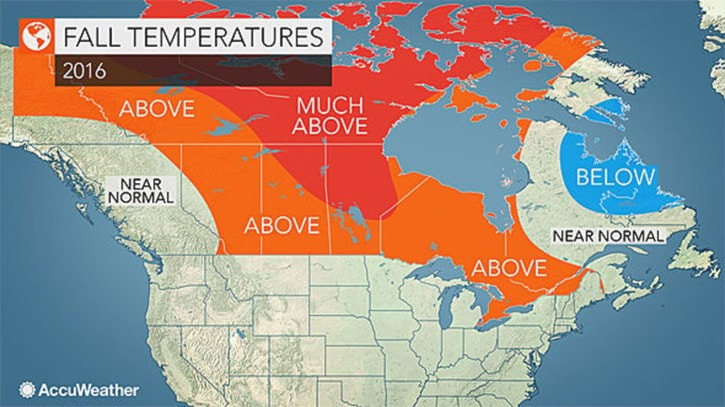Although the average temperature for the end of August and beginning of September in Burns Lake is 19 C, the Lakes District has had several days with highs of 15 C and 14 C.
On Sunday Aug. 28, Burns Lake saw half the amount of rain expected for the month of August, and has had several rainy days since.
But does that mean summer is already over in Burns Lake?
According to Matt MacDonald, a meteorologist with Environment Canada, these below normal temperatures seen over the past couple of weeks are only temporary.
“We’re expecting temperatures to rebound,” he said. “The projection for the fall is a slight chance of warmer than normal temperatures in Western Canada.”
MacDonald said the below normal temperatures will only remain until Sept. 10.
“Gradually, the temperatures will rebound and summer-like weather should return by then,” he said.
Although there’s no indication of potential snow over the next couple of weeks in Burns Lake, MacDonald said frost is a strong possibility.
El Niño conditions have been declining since December of 2015. As El Niño dissipates, meteorologists have been watching if La Niña conditions will be seen in Canada. La Niña is the opposite of El Niño and it could bring colder than normal temperatures.
MacDonald said Canada is currently in “neutral conditions”- with neither El Niño nor La Niña conditions - and that meteorologists are now questioning if La Niña conditions will be seen at all this year.
“Initially, we were expecting a moderate to strong La Niña, and now we’re questioning whether it will be neutral conditions, which is what we’re seeing right now,” he said.
Ocean temperatures are back to normal for the first time since the fall of 2015.
According to AccuWeather’s fall outlook, temperatures across British Columbia will average near-normal in September and October, and then trend above normal for November as a more westerly flow of Pacific air will take hold.
In terms of long-range precipitation for the region, AccuWeather’s senior meteorologist Brett Anderson expects near-average rainfall for the first half of fall, and then slightly above-normal precipitation for the second half.
